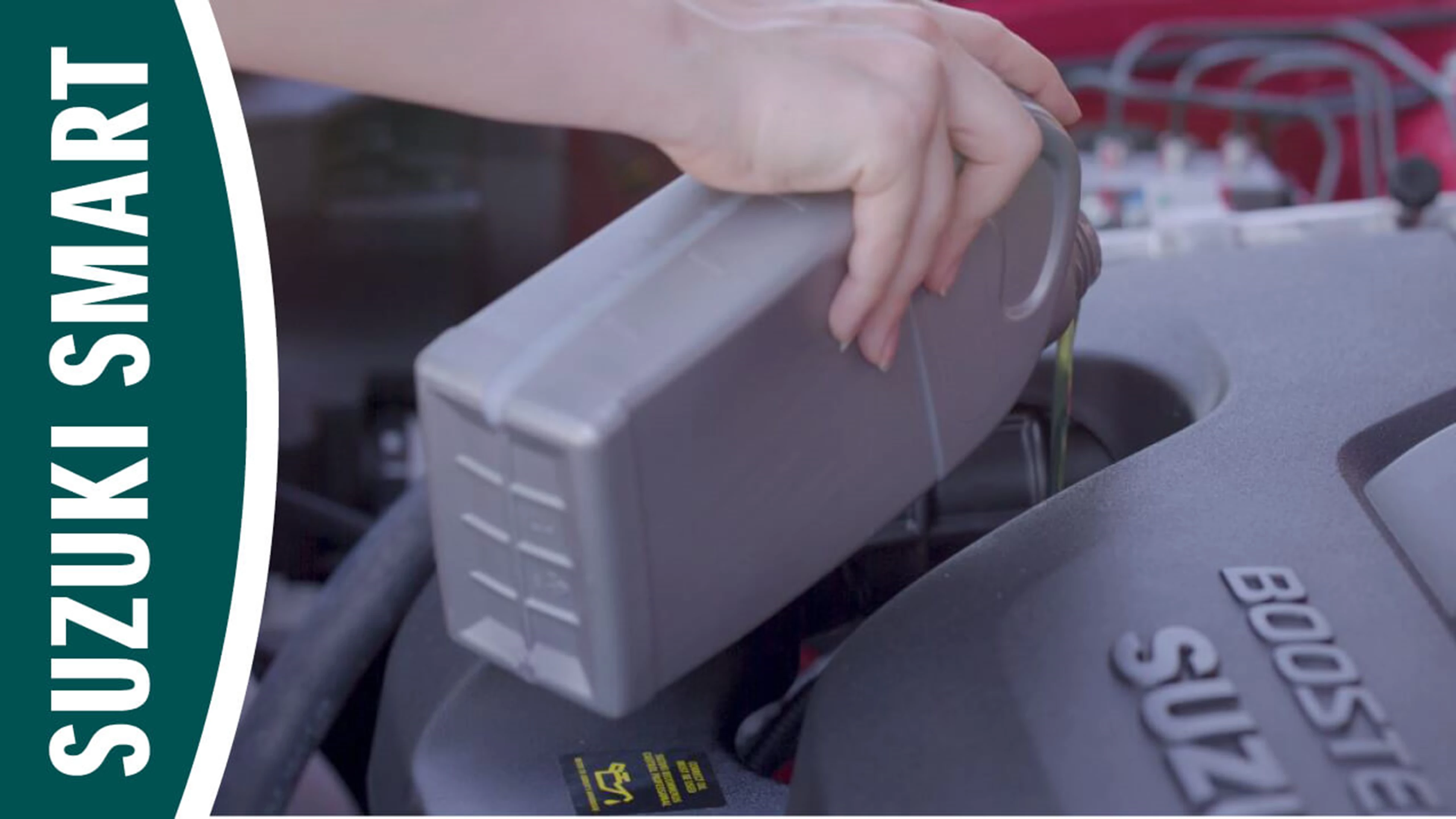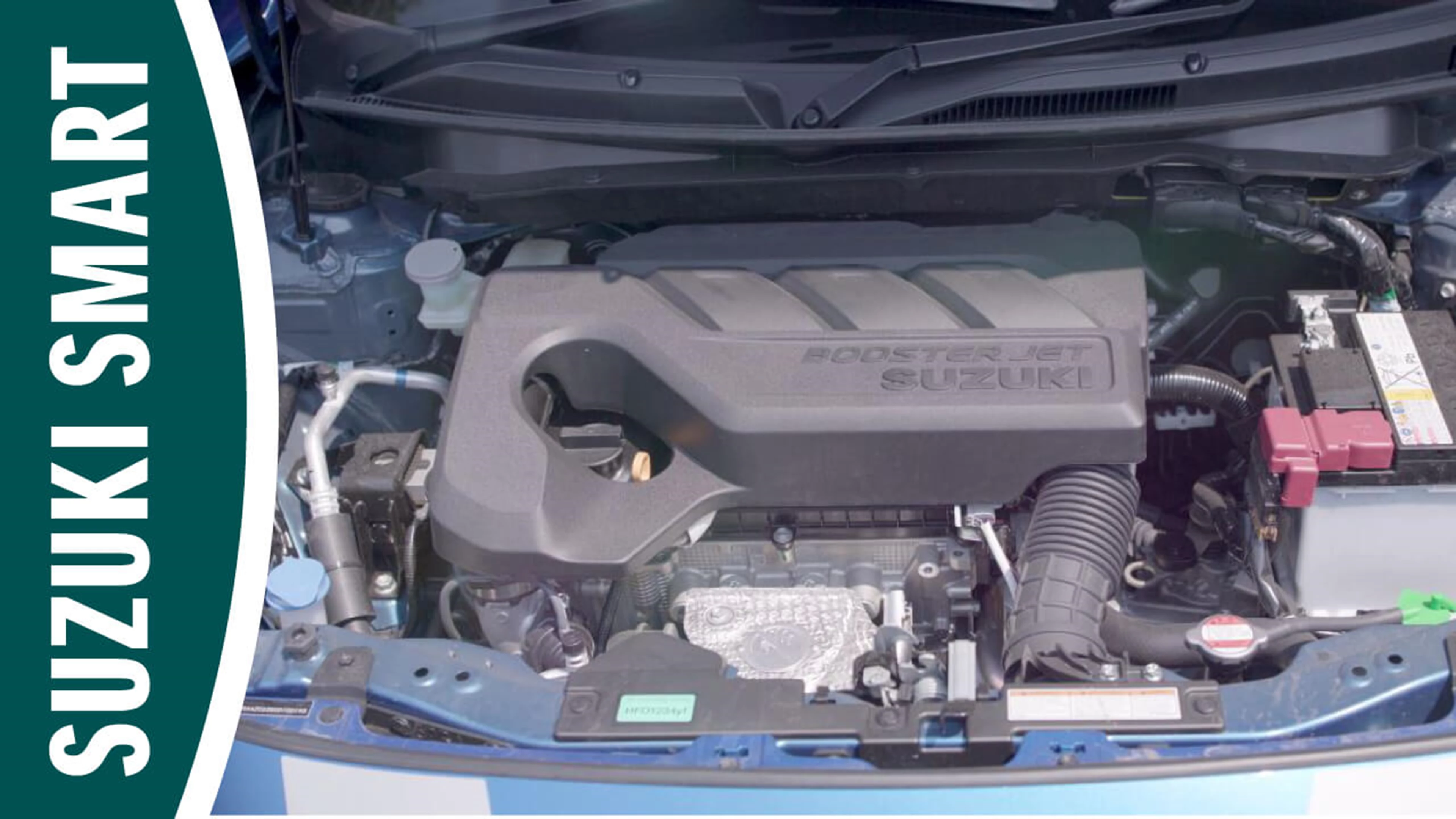Maintaining your Suzuki
Regular checks are the key to keeping your Suzuki in good working order.
HOW TO OPEN AND CLOSE YOUR BONNET
Watch the video below:

Instructions for
Opening Bonnet
Suzuki owners will need to access the bonnet of their car every now and then, as part of the process of maintaining the car. For example, you’ll need to check oil levels (and possibly top them up), or top up the windscreen washer reservoir.
Before opening your bonnet, it’s worth referring to your owner’s handbook, or seeking advice at your local Suzuki Service Centre, but the process is fairly straightforward.
The first thing to do is to find the bonnet release lever, which will be located on the underside of the dashboard in the footwell of the car (the type of lever will vary from model to model, though). If you pull the lever towards you, it will unlock the bonnet – and you will hear a pop as it does so.
Then you go to the front of the car to find the latch between the bonnet and the grille. If you use your fingers to feel for the latch, you should be able to locate it. Push the latch and you’ll be able to open the bonnet and lift it up fully.
Next, find the bonnet prop rod – the position of which will vary from one model to the next, but you should be able to identify it quite easily. Open out the prop rod and insert the end into the hole in the bonnet, in order to secure the bonnet.
When you’ve finished your job, remove the prop rod from the bonnet and place it back into its original position, then lower the bonnet until it’s around 20cm above the closed position. Let go of the bonnet and it should close securely – but make sure it is, as it should be in place before starting to drive.
HOW TO CHECK ENGINE OIL
Watch the video below:

More about
Oil Maintenance
Maintaining the correct oil level in your Suzuki is essential, because oil is an important component of your car: it lubricates, cleans, cools and protects the moving parts of your engine, and also prevents the engine from seizing up and breaking down.
Checking that oil levels are within recommended guidelines can therefore help you avoid costly problems.
To check the oil level, you’ll need to open the bonnet and check it using the dipstick in the engine bay.
The first thing to do is make sure that the engine is cold: if you have a petrol car, the engine should have been off for five minutes, or 10 if it's a diesel. Your vehicle should also be parked on a firm, level surface. Then open the bonnet and find your dipstick, which will have a yellow handle.
Pull the dipstick all the way out and wipe it clean with a rag or tissue to remove any oil residue on it. The dipstick should be marked with two notches near the bottom, which show what the minimum and maximum oil levels should be.
Now put the dipstick back into the engine, then slowly pull it all the way out again to check the oil level. The oil residue on the dipstick should be between the minimum and maximum markings.
If the oil residue is below the minimum marking, you need to top up your oil, using the Suzuki-approved brand and grade. Add some oil then check the level. If it's still low, add some more and check again. Keep doing this until the oil level is between the minimum and maximum marks.
Don't forget to replace the oil cap when finished.
MAINTAINING YOUR SUZUKI
Watch the video below:

Keeping your Suzuki
Roadworthy
Keeping your Suzuki roadworthy and in peak condition is important not only to avoid paying for repairs and replacement parts that you could avoid, but also to ensure that it’s safe to use.
Your car needs a service once a year, or whenever you’ve reached the recommended mileage, so make sure that you know when it is due to go to your local Suzuki Service Centre.
But in the meantime, there are a few things that you can do yourself to keep on top of your car’s maintenance.
For example, you can regularly (once a month, we’d suggest) check the level of the car’s coolant, which prevents overheating in the summer or freezing in the winter, plus corrosion in the engine. With the engine cold (if you have a petrol car, the engine should have been off for five minutes, or 10 if it's a diesel), check that the level is between the minimum and maximum markers. If it’s low, visit your local Suzuki Service Centre who will top it up with the correct coolant for your car.
Another important thing to check is brake fluid. This will need replacing every two years, but regular checks are important, especially if your brakes suddenly start to feel a little ‘spongey’. So locate the tank and check that the liquid (which should be clear) is between the minimum and maximum markers. Again, if it needs topping up, go to your local Service Centre.
And then there’s regular cleaning. This is not just for the sake of appearances: you can minimise corrosion – especially in winter, when there’s salt on the roads – by regular washing. Using specialist products will also help keep the bodywork in good condition.




